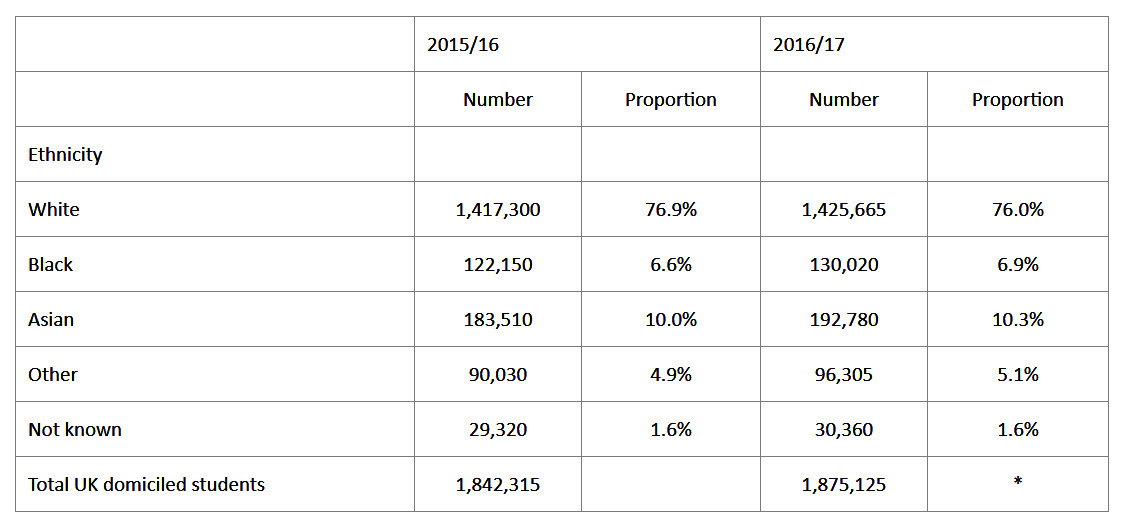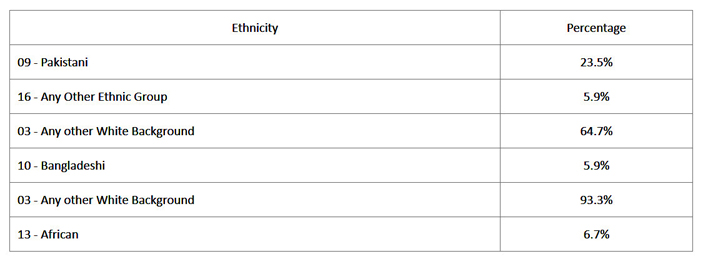1.1 Results Consortium (Results) is committed to widening access and participation in higher education. This commitment is reflected in our published Widening Access Statement and our performance in access, success and progression for the Further Education programmes we have delivered.
1.2 Results has reviewed data for student enrolment from the Higher Education Statistics Agency (HESA) for the years 2015/16 and 2016/17.
The following figures are given:


